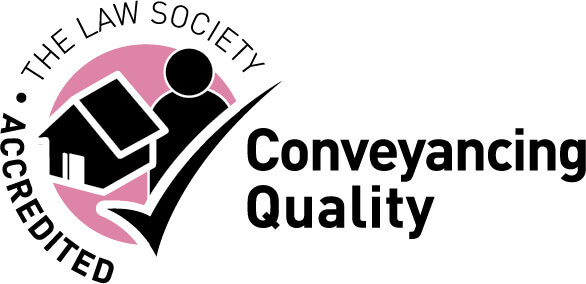“Furlough Leave” – The Coronavirus Job Retention Scheme
(including updates as published by HMRC on 4 April 2020)
Q and A for employers, employees and the self-employed
As an increasing number of employers turn to the Coronavirus Job Retention Scheme to avoid making redundancies, businesses are asking what help for employers is being offered by the government?
- Employers with fewer than 250 employees can reclaim Statutory Sick Pay paid in respect of the first 14 days of COVID-19-related sickness absence.
- A 12-month business rates holiday for all retail, hospitality and leisure businesses.
- A CoronavirusBusiness Interruption Loan scheme.
- Deferring payment of VAT
- The CoronavirusJob Retention Scheme (“Furlough”)
This newsletter focusses on those measures most affecting employment relationships and answers some of the most frequently asked questions.
What is furloughing?
To be placed on furlough leave means a temporary absence from work. Employees cannot undertake work for the employer seeking the reimbursement during furlough. The employee can undertake volunteering work (assuming it is not for the employer) and can undertake training.
Employers must notify their employees in writing of them being classified as furloughed employees and retain a record of this for five years.
Can an employer unilaterally put an employee on furlough leave?
Employers have an obligation to pay wages, but not to provide work so if salary is to be topped up, there is unlikely to be a breach of contract.
If the employer intends to only pay 80% and in the absence of a contractual clause allowing layoff, employers should discuss the furlough leave with the employee, notify them in writing and seek agreement. If there is already a lay off clause in place, this may not be necessary but may be good practice.
An employee can refuse to be placed on furlough leave, but this is unlikely, given the alternative would likely be redundancy.
Who is covered?
The scheme covers full-time employees, part-time employees, employees on agency contracts and employees on flexible or zero-hour contracts employed on or before 28 February 2020 (and enrolled on the employer’s PAYE payroll system).
It also covers Company directors who can during furlough leave perform their statutory duties but otherwise undertake no other work for the company. Equally, members of Limited Liability Partnerships, who are designated as employees for tax purposes, can be placed on furlough leave.
Employees who have caring responsibilities or who are ‘shielding’ under public health guidance, can also be furloughed.
How long can an employee be on furlough leave?
Employees must be placed on furlough leave for a minimum of three weeks in order for the employer to qualify for the payments under the scheme. If an employee is placed on furlough leave and called back after fewer than three weeks, the employer would need to pay them in full.
Subject to any period of furlough leave being for at least three weeks however, employees can be furloughed several times.
Can employees work for another employer when on furlough leave?
Yes. This means that an employee could start different employment when on furlough leave and whilst receiving 80% of their salary, receive 100% in the new employment.
Individual employment contracts may however prohibit an employee from working elsewhere without permission.
What does this mean for the employee’s salary and other contractual benefits?
Salary
Under the Coronavirus Job Retention scheme, all UK employers can claim a grant from HMRC to cover 80% of the wages costs of employees who are not working but kept on the payroll of up to £2,500 a month for each employee.
Employers can choose to top up the remaining 20% if they wish, though this is not compulsory. Withholding 20% of an employee’s salary will, however, amount to breach of contract and unlawful deduction of wages unless the employee gives their consent.
Non-monetary benefits such as business vehicles and health insurance for example, are not included in the 80% that employers can claim as a grant from HMRC.
An employer can reclaim also 80% of ‘compulsory’ commission from HMRC in addition to basic salary, as well as other payments an employer is obliged to make (so not discretionary payments).
Although not clarified, ‘compulsory’ is likely therefore to mean ‘contractual’.
Such commission however, as employees on furlough leave cannot undertake any work during furlough for their employer, can only relate to previous work undertaken prior to the furlough scheme coming into effect.
Annual Leave
Unfortunately, the interaction between annual leave and furlough leave is not currently clear. Whilst on Furlough leave employees will continue to accrue holiday in the normal way and could arguably take it (or be placed on it). However, annual leave is considered a period of rest and relaxation, which may not be possible during a lockdown. Additionally, leave may affect reimbursement from HMRC as it would not be considered true furlough leave or may disrupt the furlough leave.
ACAS suggests that new carry-over rules could apply where an employee has been put on furlough leave. This carry over would only apply to 4 weeks leave applicable under the Working Time Directive over a 2-year period. However, further government clarification is required.
Sick pay
If an employee becomes sick during furlough, this will end the furlough period and they should be put on sick leave and paid accordingly (whether this is contractual or Statutory Sick Pay).
An employer cannot claim for employees while they are receiving Statutory Sick Pay, but these employees can be placed on furlough leave once they are no longer receiving Statutory Sick Pay.
For further information on sickness absence and Coronavirus please see Hatchers’ Newsletter: Employment Law Update – Coronavirus Q&A for employers and employees
How can employers manage the build-up of annual leave once furlough leave ends?
Employers can require that annual leave is taken once the furlough period comes to an end. However, this is subject to the employer providing sufficient notice (twice the amount of time to be taken)
How do employers claim monies under the furlough scheme?
An employer must have started a PAYE scheme on or before 28 February 2020 to qualify. Reimbursement will then cover from 1 March 2020 and 31 May 2020 (with a possible extension).
An HMRC portal is being set up to allow employers to claim the 80% or £2,500 salary caps, which would then be paid through normal payroll. Some employers will not be able to continue to pay 80% of employees’ salaries until the HMRC portal is up and running and reimbursement is received. In this instance the employer will need to seek agreement from the employee to defer the payment.
Will employers need to collectively consult with employees?
The Government Guidance states “If sufficient numbers of staff are involved, it may be necessary to engage collective consultation processes to procure agreement to changes to terms of employment.” Where the employer intends to vary the contracts of 20 or more employees in order to introduce furlough leave, and it intends to make employees who do not consent to the change redundant – there will be an obligation to collectively consult.
What if redundancies have already been made?
If an employer has given notice of redundancy after 28 February 2020, the employer can choose to put the employee on furlough leave instead.
Employees made redundant since 28 February 2020 can be re-engaged and put on furlough leave instead, though this is not compulsory.
What if an individual is self-employed?
The government also announced the introduction of a Self-employed Income Support Scheme under which eligible self-employed individuals, including partnerships, will receive 80% of their average monthly ‘trading profit’ over the last three years, up to £2,500 a month. The scheme will run for an initial three months and be extended if required.
To be eligible businesses must have submitted a tax return for 2018/19 and still be trading. The business’ trading profit must have been less than £50,000 in the 2018-19 tax year as an average of trading profit over the previous three tax years. More than half of their income must have come from self-employment during the above periods to be eligible.
What if I run my business as a shareholder / director of a limited company?
Dividend income is not included in either the Job Retention Scheme or the Self-employed Income Scheme. Any director salary taken through PAYE would be recovered up to the caps under the Job Retention Scheme. It is unclear whether further announcements will be made to cover these individuals.
See above regarding Company directors and their statutory duties.
If you are either an employer or employee and require further advice on the effects of COVID-19 contact Hatchers Solicitors’ Employment Law Team on 01743 248545.
Disclaimer:
The content of this Newsletter is descriptive of its subject matter only and must not be relied upon as providing specific legal advice.
The partners of Hatchers Solicitors LLP and the writer of this Newsletter will not, except as required by law, be liable for any loss or damage arising from reliance on any information provided in this Newsletter.
The content of this Newsletter is copyright and cannot be reproduced in any form without the prior written agreement of Hatchers Solicitors LLP.





